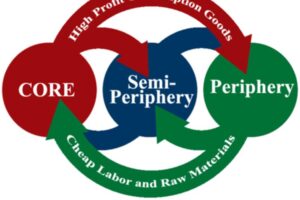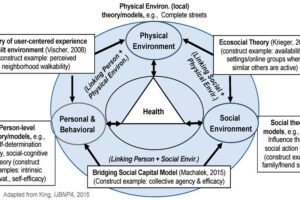
5(e) Explain the theoretical framework and stages of economic growth proposed by Rostow’s model. 10 Marks (PYQ/2024)
Answer:
Introduction
Walt Rostow’s model, presented in his 1960 work The Stages of Economic Growth: A Non-Communist Manifesto, outlines a linear and sequential process through which economies transition from traditional, agrarian systems to modern, high-consumption societies. Although developed during the mid-20th century, the model’s principles still inform debates on development policy and economic transformation in contemporary settings.
Theoretical Framework
- Linear, Sequential Development: Rostow’s approach assumes that all nations follow a predictable path of development, where each stage lays the groundwork for the next. This determinism reflects a positivist tradition that prioritizes observable, measurable progress.
- Modernization and Industrialization: The model views development as the shift from low-productivity agriculture to industrial and eventually service-oriented economies. Investment, technological innovation, and capital accumulation are seen as vital vehicles for driving this progression.
- Policy Orientation: Rostow’s framework was intended as an alternative to Marxist models. It underlines the importance of economic policies—such as increasing savings, encouraging investment, and fostering technological upgrades—to catalyze growth.
- Critique and Adaptation: While its Eurocentric and deterministic aspects have been critiqued, the model remains influential as a benchmark. Modern scholars blend its structured stages with insights from behavioral, environmental, and globalization theories to explain developmental complexities.

Stages of Economic Growth
- Traditional Society:
- Characterized by subsistence farming, low technology, and limited productivity.
- Social structures are static, and economic activities are predominantly primary sector based.
- Pre-conditions for Take-off:
- Initial investments in infrastructure, education, and technology begin to transform the economy.
- Agricultural and small-scale industrial advances create the first signs of surplus and productivity.
- Take-off:
- Marks rapid industrialization and significant growth in production.
- Increased savings and reinvestment drive accelerated development, acting as the “engine of growth.”
- Drive to Maturity:
- The economy diversifies with new industries emerging and a shift from heavy industries to technology-based activities.
- Innovation, improved production techniques, and expanded markets result in sustained economic growth.
- Age of High Mass Consumption:
- With rising incomes, the economy shifts toward a consumption-oriented model.
- The service sector expands, and social welfare improves, supporting a high standard of living.
Application in Contemporary Times
While Rostow’s model was conceived in a different era, its underlying framework continues to influence development strategies today:
- Policy Formulation: Many governments use the model as a reference for setting strategic goals. The emphasis on investment in technology, infrastructure, and education echoes in modern policies promoting sustainable industrialization and digital transformation.
- Development Assistance: International agencies and development banks often assess a country’s stage of development to tailor financial support. For instance, programs targeting “take-off” or “drive to maturity” phases encourage industrial diversification and technological adoption.
- Critiques and Integration: Contemporary planners acknowledge that the linear progression outlined by Rostow oversimplifies complex, multidirectional development trajectories. As a result, the model is now frequently integrated with insights from globalization theory, environmental sustainability, and behavioral economics to provide more contextually relevant development strategies.
Case Studies
Case Study 1: South Korea
- Overview: South Korea is often cited as a success story exemplifying Rostow’s stages. After the Korean War, the country embarked on rapid industrialization.
- Application of Rostow’s Model:
- Pre-conditions & Take-off: Early investments in infrastructure, education, and export-oriented industrial policies paved the way for rapid industrial growth in the 1960s and 1970s.
- Drive to Maturity & High Mass Consumption: By the 1990s, South Korea diversified its economy, focusing on technology and services, leading to high per capita income and improved social welfare.
- Empirical Data: South Korea’s growth rate averaged over 8-10% during its rapid industrialization phase, transforming it from one of the poorest countries in the world to a high-income nation in a few decades.
Case Study 2: Ethiopia
- Overview: Ethiopia provides a contrasting case in Sub-Saharan Africa, where government-led initiatives have aimed to transition the economy from agrarian-based to industrialized.
- Application of Rostow’s Framework:
- Pre-conditions and Take-off: Efforts to improve infrastructure (roads, electricity) and invest in manufacturing zones have been initiated to stimulate growth.
- Challenges: Despite these efforts, the country faces hurdles related to political instability, resource limitations, and ongoing reliance on agriculture, underscoring that not all economies follow the idealized linear path.
- Empirical Data: Recent reports indicate Ethiopia’s GDP growth has hovered around 6-8% as it strives to transition into a more diversified economy, reflecting both progress and the complexity of replicating the “take-off” stage.
Conclusion
Rostow’s model offers a clear, stage-based framework for understanding economic development, emphasizing the role of industrialization and capital accumulation. Although it has been critiqued for its linearity and Eurocentrism, its influence persists in contemporary development policy and planning. Through the experiences of countries like South Korea and Ethiopia, the model’s utility—when adapted to local contexts and integrated with modern theories—remains relevant for shaping strategic, sustainable economic growth in a rapidly globalizing world.
Tag:Geography Case Study, Geography Optional, geography optional case study, Geography Optional Pyq, geography optional pyq 2024, human geography, Models, models theories laws and perspective in geography, ostov model, rostov model, Stages of economic growth, The stages of economic growth: A Non-Communist Manifesto, theories and laws


